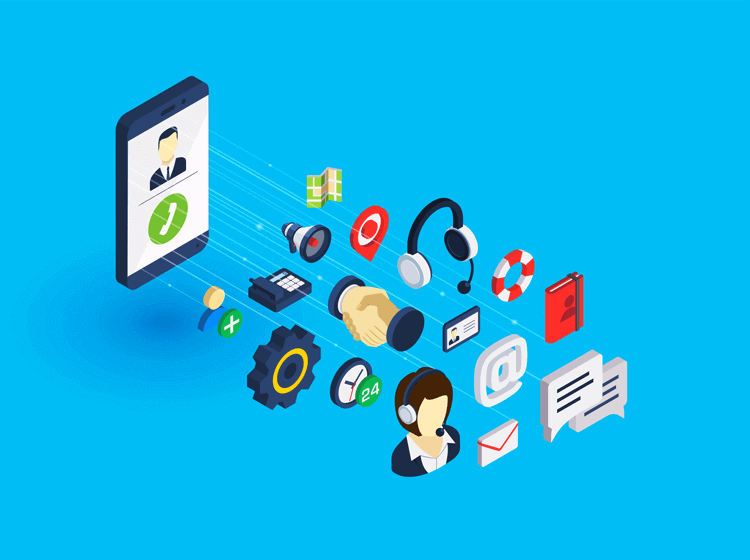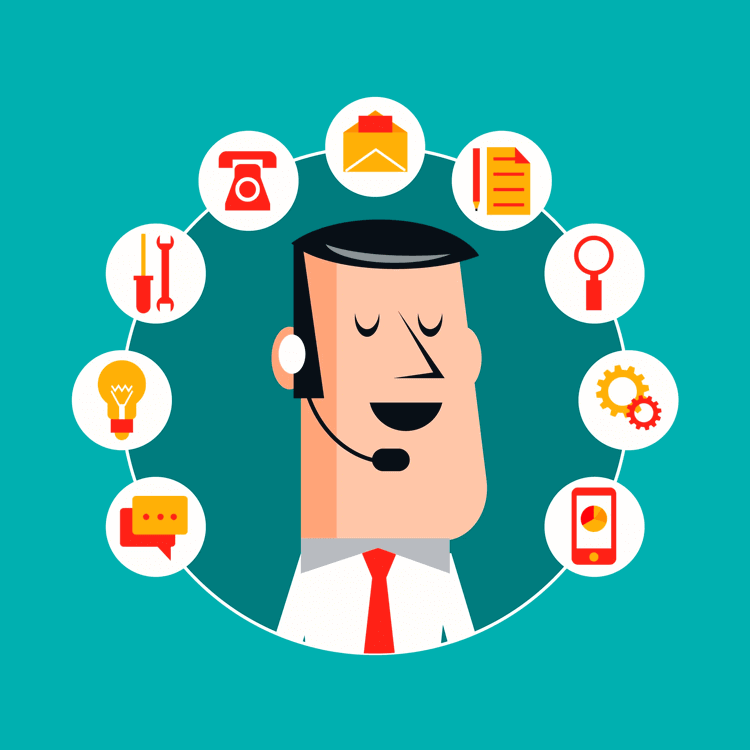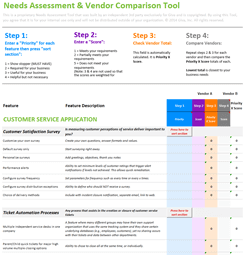Seamless Customer Experience: Top 10 Strategies for Better Service Delivery
The concept of a seamless customer experience has quickly become a pivotal component to any successful business strategy. This approach centers around creating a smooth, efficient, and enjoyable journey for customers at every touchpoint with your brand. From first contact to post-purchase support, ensuring a seamless experience can significantly enhance customer satisfaction and loyalty.
This blog post looks at what constitutes a seamless customer experience, its importance, and practical strategies, empowering your business to meet and exceed modern consumer expectations.

Understanding Seamless Customer Experiences
A seamless customer experience is about creating a smooth and effortless journey from start to finish. This means when customers interact with a brand, they encounter a consistent and positive experience. This is whether online, over the phone, or in person.
The seamless customer journey is marked by easy transitions between different stages of buying and using products or services. For example, finding product information online should be as straightforward as asking for help in a store.
This approach ensures that customers don't face any frustrating barriers or confusing processes. By focusing on a seamless experience, businesses encourage brand loyalty and greater customer retention with repeat business.
Did you know? According to data shared by techjury, businesses that focus on improving customer experience, can see up to an 80% increase in revenue!
Industry Examples of Seamless Customer Experiences
Given this more general description of a seamless customer experience we just noted, what might they look like in the real world? Here are a few examples:
- Banking: Mobile-first banking services like Chime offer instant account setup, real-time notifications, and integrated financial tools for a smooth experience
- Healthcare: Telehealth platforms provide seamless scheduling, video consultations, and prescription refills in one app
- Retail/eCommerce: Shopify merchants use integrations like Shop Pay for quick checkouts and easy order tracking
- SaaS: Platforms like Slack offer seamless onboarding with integrations to existing enterprise tools
The Difference Between Frictionless and Seamless Customer Experiences
There is another defined type of customer experience, and that is "frictionless." Sometimes it and the "seamless" version are used interchangeably. However, they do slightly differ:
- A "frictionless" experience removes barriers, minimizing effort. It is about mitigating pain points.
- A "seamless" experience goes further, bringing together all touchpoints and processes along the entire customer journey.
Removing pain points is great and a worth-while effort. And the customer experience is even more enhanced when interactions are made more seamless.
Learn more about customer pain points from our blog post on the topic and how you can work to remove them.
The Importance of Seamless Services: Why It Matters
The impact of seamless service delivery on business is profound; here are a few areas that it could affect:
- Enhanced Customer Satisfaction: Seamless service delivery ensures smooth processes, significantly reducing customer frustrations.
- Increased Loyalty: A consistent, positive experience builds trust and loyalty, encouraging customers to return.
- Positive Brand Reputation: Smooth and efficient services strengthen the brand's image.
- Referrals and Repeat Business: Satisfied customers often recommend seamless services and are likely to be repeat buyers.
- Business Growth: The long-term customer relationships built through seamless service delivery contribute substantially to overall business growth.
Watch Our Video on Creating a Seamless Customer Experience
10 Top Strategies for Seamless Customer Experience Delivery
-
Personalized Customer Interactions
How To: Utilize customer data to customize interactions. Tools like CRM systems for tracking customers' preferences and history can help. These personalized interactions might be most effective via email to different customer subsets.
Why: According to McKinsey & Company, companies experiencing rapid growth attribute 40% more of their revenue to effective personalization strategies.
Example: Netflix offers a prime example of this strategy. By analyzing user viewing history, Netflix personalizes the content displayed on each user's homepage. This customization extends to the recommendations of shows and movies, email marketing, and even the creation of Netflix originals based on popular trends.
-
Omnichannel Customer Support
How To: Seamlessly connect customer options and support across phone, email, social media, and live chat. This helps ensure uniform quality and information.
Why: According to the Aberdeen Group, via Porch Group Media, businesses that excel in omnichannel customer interactions tend to keep around 89% of their clientele, whereas those with less effective omnichannel strategies only manage to retain about 33%.
Example: Disney's omnichannel approach is exemplified through their My Disney Experience app. This platform integrates hotel bookings, park tickets, dining reservations, and FastPass selections. Guests can access all these services across the app, website, and physical interactions in the park, providing a consistent experience.
-
Streamlined Payment Processes
How To: Create an easy and secure checkout process with minimal steps, offering various payment methods beyond credit cards. For example, consider PayPal or even extended payment plan providers like Klarna.
Why: A user-friendly payment experience can significantly boost conversion rates.
Example: Amazon changed the online shopping experience with its one-click purchasing feature. This system stores users' payment and shipping information, allowing them to buy items with a single click. This simplification not only enhances user convenience but also reduces cart abandonment and increases repeat purchases.
-
Integrating Feedback Mechanisms
How To: Utilize tools and platforms to gather customer feedback at various interaction points. Offer customers incentives for sending in ideas that make it to your product lineup.
Why: Feedback integration is key to enhancing customer experience. Customers feel like they are being heard when you implement feedback they have shared.
Example: LEGO's Ideas platform showcases seamless services by inviting customers to submit and vote on new LEGO set ideas. This platform not only engages the community but also ensures that new products align with customer interests. While this isn't necessarily feedback on existing products, it does give customers a "voice" on what products launch next from the brand.
-
Consistent Brand Messaging
How To: Align all communications across different channels to maintain a consistent brand voice and message.
Why: This improves brand recognition among consumers. They can pick your product out or recognize its designs/branding, even if they are not necessarily sure of what it does. This could also peak consumer curiosity.
Example: From its iconic logo to its distinctive red and white color scheme, Coca Cola ensures that every advertisement, product packaging, and social media post reflects its core brand identity. This consistency also extends to its marketing campaigns, which usually center around themes of happiness and sharing - common moments when one may turn to a Coca Cola product. By keeping its messaging uniform across various platforms and regions, Coca-Cola creates a familiar product for consumers.
-
Efficient Information Access
How To: Structure information on websites and apps to be easily accessible and understandable. Consumers want to know what your product does and how it is a step ahead of the competition.
Why: Efficient information access is a key aspect of customer experience. According to PwC, 73% of surveyed customers identify the overall customer experience as an important factor in their purchasing decisions. This is right behind other key factors like price and product quality. Access to information can make the purchasing process much more seamless. Contrarily, a lack of information can create frustration and cart abandonment.
Example: A great example of efficient information access in a customer service context is Zara's use of RFID (Radio-Frequency Identification) technology in their stores. This technology allows customers to easily check the availability of different sizes and colors of clothing items without needing to ask a staff member.
-
Responsive and Adaptive Web Design
How To: Develop websites that automatically adjust to various devices and screen sizes. This helps ensure a user-friendly experience.
Why: Responsive design improves accessibility and user engagement.
Example: While there are many great examples, Airbnb's website and mobile app showcase responsive design. Those offer a consistent and easy-to-navigate interface on any device. This greatly enhances the user's ability to quickly find and book accommodations.
-
Proactive Customer Service
How To: Anticipate customer needs and issues, and address them before they escalate. This can be issuing a recall for a defective product or even issuing software updates based on a developing trend.
Why: Proactive service improves customer satisfaction and reduces complaints.
Example: Apple Support provides a proactive approach by offering suggestions and solutions through their support website and app, based on the user's device and past inquiries.
-
Leveraging AI and Machine Learning for Predictive Assistance
How to: Implement AI and machine learning to predictively anticipate and address customer needs. AI-driven tools such as chatbots can provide instant responses and personalized recommendations.
Why: As reported in a survey done by Salesforce, consumers remain skeptical about the use of AI overall. Despite this sentiment, 73% of business buyers and 51% of consumers are open to the use of AI to improve their experiences. These numbers are still strong, despite dropping off from 2022.
Example: Retailers using AI for product suggestions based on browsing history provide a seamless and personalized shopping experience. Examples of this can be seen on almost all major retailers that offer an ecommerce solution, including Amazon and Walmart.
-
Implementing Seamless Integration of Services and Products
How to: Create a cohesive customer experience by ensuring all services and products are seamlessly integrated. This approach allows customers to easily navigate between different company offerings.
Why: Via the Financial Brand, Gartner predicts that organizations embracing integrated services can expect to surpass their competitors at a 25% margin in both customer and employee satisfaction metrics by the year 2024.
Example: Google's ecosystem, including Google Search, Google Maps, and Google Drive, offers an excellent example of how integrated services can enhance the overall user experience.
Challenges to Achieving Seamless Experiences
Even with the best of strategies, there are always obstacles. For bringing a seamless customer experience, some difficulties can be the following, along with a solution to help:
-
Independent data systems:
Customer data is fragmented across platforms, preventing a unified view.
Solution: Invest in integrated CRM or CX platforms that centralize data, ensuring every team sees the same customer profile.
- Inconsistent messaging:
Different channels deliver conflicting tones or information.
Solution: Create a brand style guide and use omnichannel tools to align messaging across web, email, chat, and social.
-
Limited resources:
Smaller businesses may lack advanced technology or staffing.
Solution: Start with low-cost automation (like chatbots for FAQs) and scale gradually with individual tools that grow with the business.
-
Complex customer expectations:
Customers expect speed, personalization, and consistency all at once.
Solution: Use AI-driven personalization broadly, while training staff to deliver empathetic, human interactions where it matters most.
Understanding these issues afford teams the opportunity to address them and break down the barriers to a seamless customer experience.
Measuring If Customer Experiences Are Seamless
At first glance, there might not seem to be a clear way to measure something such as if a person's experience was "seamless." However, there are some Key Performance Indicators (KPIs) that can help track if your strategies for a smooth experience are going in the right direction:
-
Customer Effort Score (CES): Measures how easy it is for customers to resolve an issue.
A low effort score shows that customers can resolve issues easily without unnecessary steps.
-
Customer Satisfaction (CSAT): Captures satisfaction at specific touchpoints.
High satisfaction scores at various points in the customer journey suggest the process was smooth and aligned with customer expectations.
-
Net Promoter Score (NPS): Gauges loyalty and likelihood to recommend.
Customers who recommend a brand usually do so because their interactions felt effortless and personable.
-
Churn Rate: Indicates how often customers are leaving doing business with the company.
High churn usually signals a disconnected or frustrating experience, whereas the opposite can show that customers are not experiencing these issues and so are not leaving.
Leveraging AI for Enhanced Seamless Experiences
The use of AI in customer service is transforming the delivery of seamless experiences. AI's ability to offer personalized, efficient, and rapid interactions is setting new benchmarks in customer engagement.
- Personalized Product Recommendations: AI algorithms provide tailored product suggestions, increasing "basket size."
- Smart Chatbots for Instant Support: AI-driven chatbots deliver quick and accurate customer service.
- Predictive Customer Assistance: AI can anticipate and address potential customer needs.
- Efficient Customer Segmentation for Targeted Marketing: AI's data analysis gives valuable insights which can lead to effective customer segmentation.
These points are prime "seamless experience examples" demonstrating how AI integrates into and improves the customer journey.
The Bottom Line: Elevating Business Success Through Seamless Customer Service
The modern business can greatly benefit from focusing on a seamless customer experience. Emphasizing personalized interactions, omnichannel support, streamlined processes, and AI utilization can take your business to the next level.
These strategies create an environment where customers feel consistently valued across all touchpoints. This commitment not only builds loyalty but also propels business growth. As technology, especially AI, becomes increasingly integral in shaping customer experiences, adopting these strategies will ensure that businesses not only meet but exceed consumer expectations.
Giva's Customer Service Software
Learn how Giva's Customer Service software can help you give your customers that seamless experience. Start a free trial today!





